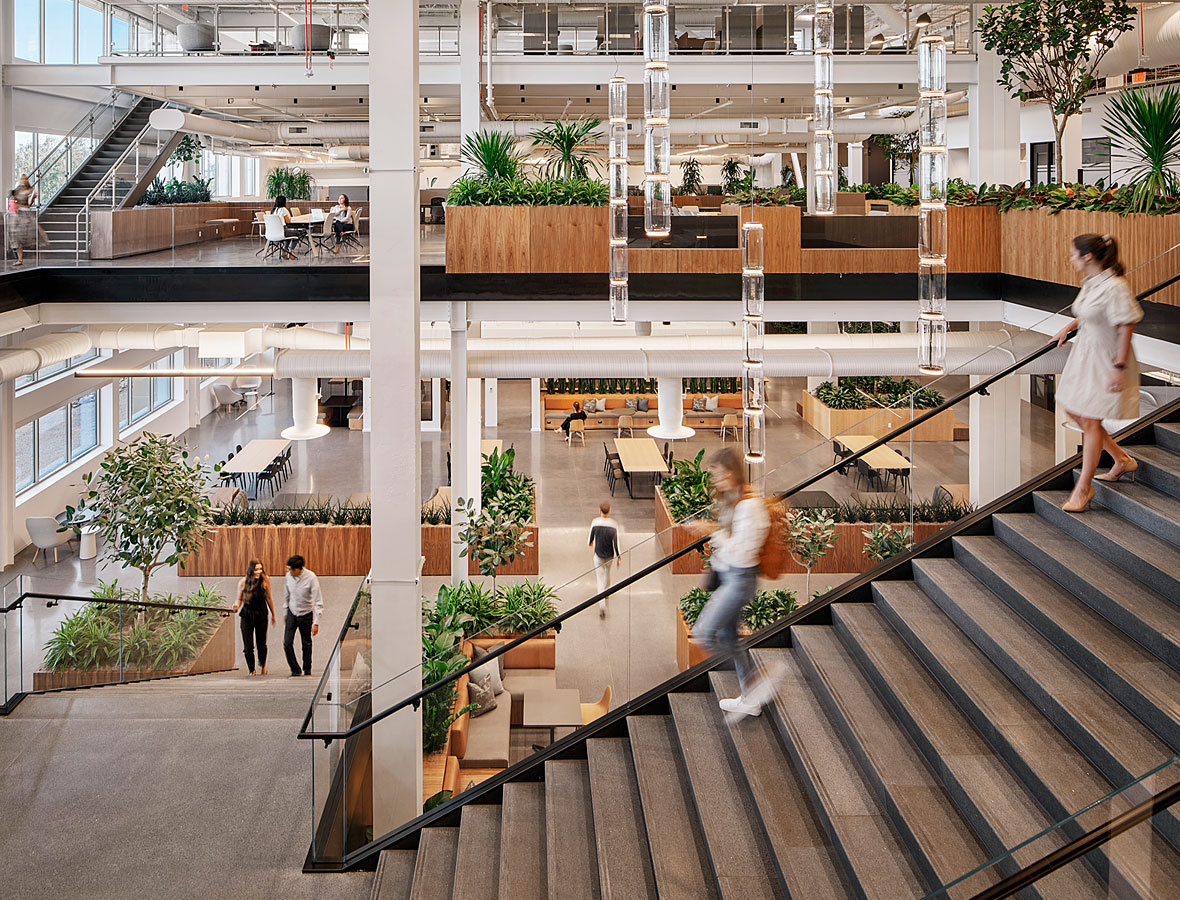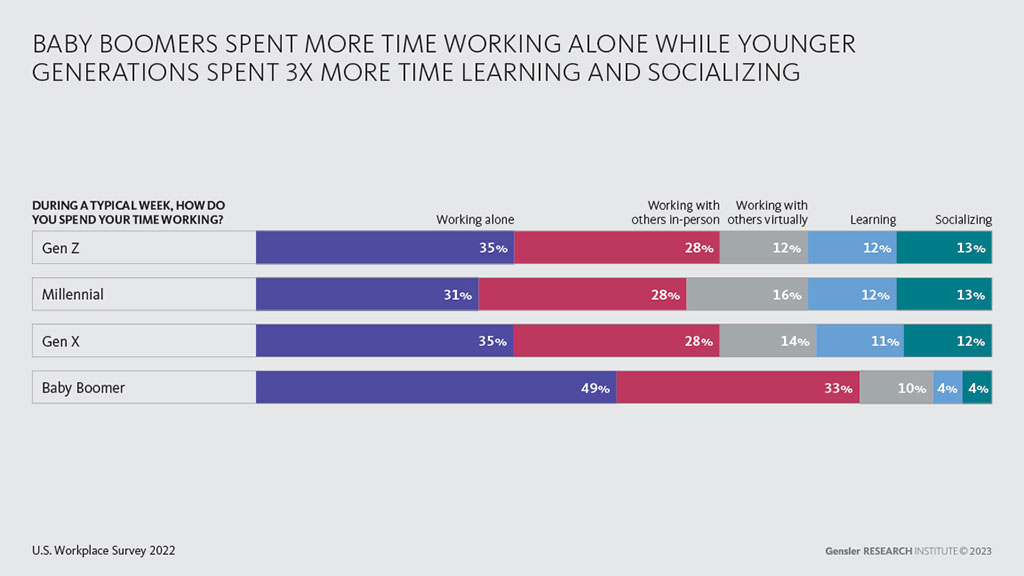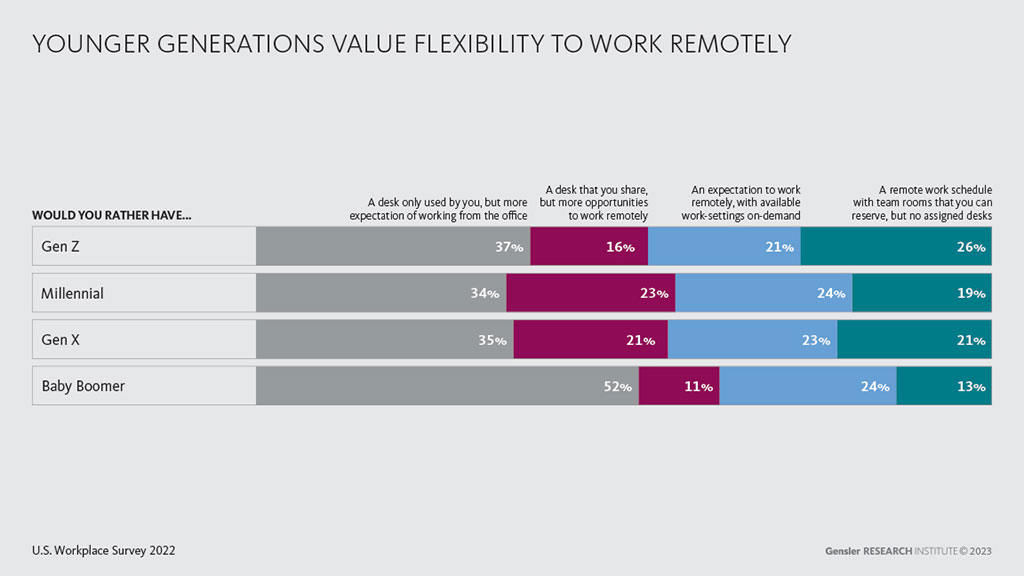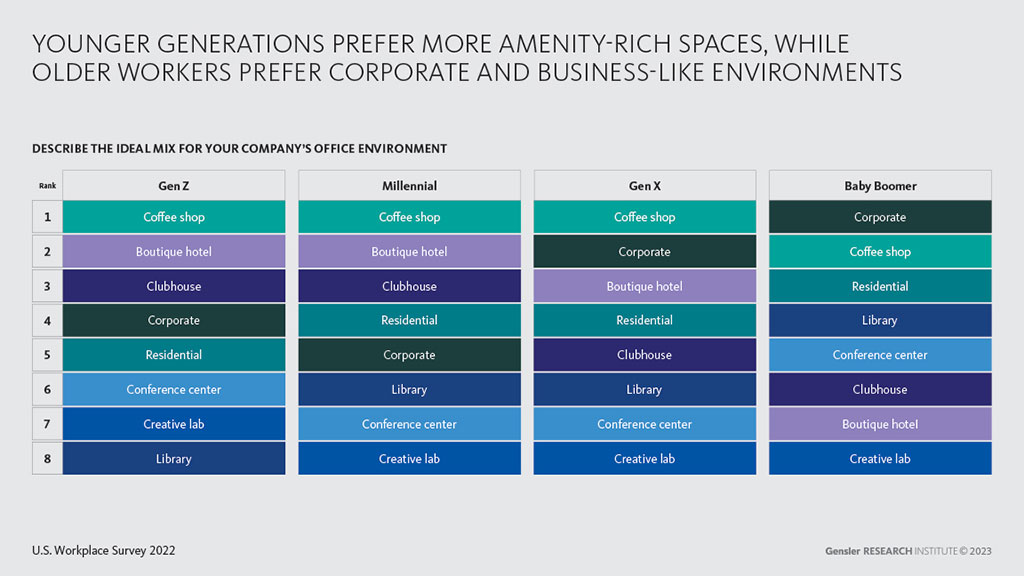Younger Generations Work Differently. What Does This Mean for the Future Workplace?
May 17, 2023 | By Janet Pogue McLaurin
Editor’s Note: This blog is part of our blog series exploring insights from our ongoing workplace research.
Younger workers, particularly Millennials and Gen Z, currently make up more than 59% of the U.S. knowledge workforce. As new generations enter the workplace, it’s important to recognize the unique workstyles and preferences that each generation brings with them. In Gensler’s own workplace research in 2021, we first uncovered a shift as organizations were planning a return to the office. In our latest workplace research, there is another noticeable shift in the way younger generations approach work, with a greater emphasis on learning, socializing, and flexibility and new expectations for the work experience.

Younger generations work differently
We’ve been studying how people spend their time in a typical work week since 2008. We have identified five work modes to categorize the wide array of work activities: working alone, working with others in-person, working with others virtually, learning/professional development, and socializing. Up until the pandemic, time spent in each work mode was fairly consistent across generations, with almost half of the time spent working alone. In the last year, we’ve seen time spent working alone drop significantly, with time spent both socializing and learning increasing from 5% to 12% of a typical work week.
When we look at time spent by generation, we see an even greater shift — Gen Z and Millennials spend three times more time learning and socializing than Baby Boomers, who spend more time working alone. These early career professionals are far more balanced across the five work modes. This suggests that Gen Z and Millennials place a higher value on building relationships and expanding their knowledge base, both of which can be important for personal and professional growth, especially for workers early in their career.
Knowledge workers are mobile — working both in and out of the office across a wide variety of locations. On average, all four generations of office workers spend just 20% of their work week at home, but that’s where the similarities end. Baby Boomers spend 70% of their work week at the office with the remaining 9% working in other locations. In comparison, younger generations spend about half the week working at the office and 30% in other locations. Younger workers are far more mobile — traveling, working in alternate office locations, client/customer sites, coworking spaces, and third places either near home or the office.

Younger generations value flexibility differently
Younger workers place a higher value on flexibility than older generations. Nearly two thirds (63%) of Gen Z and Millennial workers (66%) would prefer the option to work remotely instead of an assigned desk. Compared to Baby Boomers, Gen Z workers are twice as likely to prefer a remote work schedule with access to a team room that they can reserve when they do come into the office. Additionally, 43% of Gen Z workers prefer partial days in the office over full days, suggesting they value the ability to work both in and out of the office and/or the flexibility to adjust their schedule to fit their needs and how they perform at their best.

Younger generations prefer the office to focus on their work, but a different work experience
Despite mobility and flexibility, younger generations still value working in their company’s workplace. For Gen Z, Millennials, and Gen X, the top-ranked reason to come into the office is “to focus on my work.” This suggests that younger workers view the office as a space where they can be productive and get things done. However, they prefer a different mix of experiences than their older counterparts. They want to be in an environment that feels welcoming and amenity-rich, with a hospitality vibe that encourages socializing, connecting, and being part of a community. In fact, 86% of younger workers said they would be willing to come into the office more often if their employer provided their ideal mix of experiences.

So, what does this mean for future workplace design?
It is crucial to understand generational differences to support a productive and engaged workforce. While we need to design for all generations, we need to pay particular attention to the younger generations who have different priorities and preferences than their older counterparts.
Here are some considerations for incorporating these findings into workplace design:
- Incorporate spaces for social interaction, coaching, and learning to foster personal growth and employee engagement. These areas can be informal, hospitality-infused spaces that provide a different vibe for a new mix of experiences that younger workers crave.
- Balance active social and learning spaces with access to more private work settings that minimize noise and distractions and help further the ability to work alone for deep concentration.
- Provide choice in where employees can work within the office environment. This is highly correlated not only with a more effective workspace, but a great work experience as well.
- Consider locating in amenity-rich neighborhoods, which can function as an extension of the office — providing third places and alternate work settings for additional choice.
Finally, younger workers place a high value on health and well-being. By creating a workplace that promotes physical activity, healthy eating, and work-life balance, employers can help improve the health and well-being of their workforce and, at the same time, help attract and retain top talent. By recognizing and accommodating generational differences, organizations can create a workplace culture that is inclusive and supportive for all generations.
For media inquiries, email .

